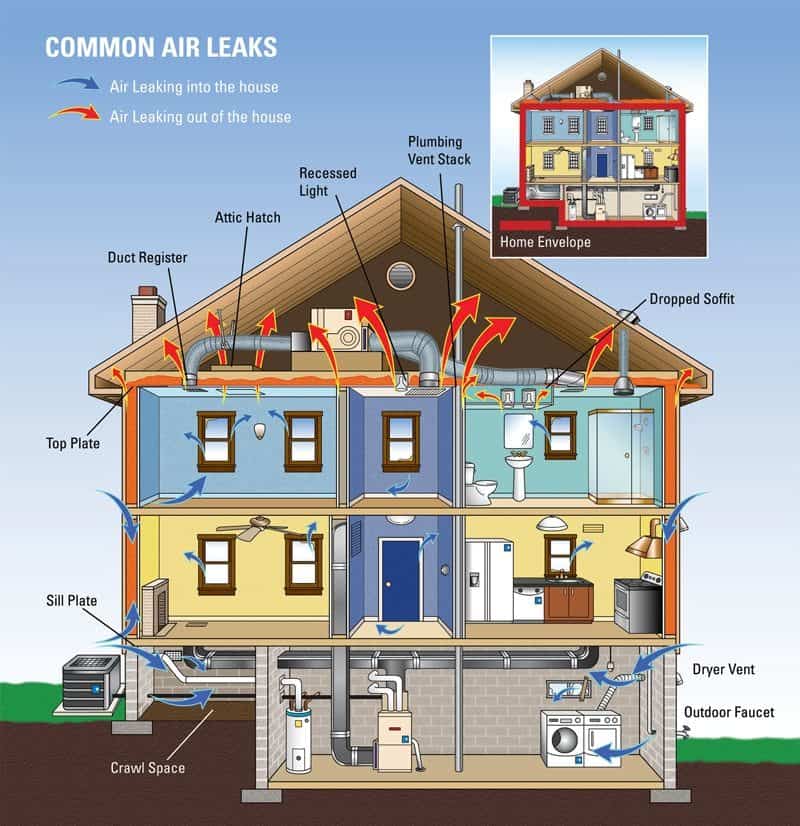In an existing house, the first step is to conduct a home energy assessment – sometimes referred to as an energy audit – to find out how the home uses energy and to determine the best ways to cut energy use and costs.
Energy efficient home, What does it mean?

Whole-house systems approach
People building a new home or doing extensive remodeling can optimize home energy efficiency with a whole-house systems approach, in which a team of building professionals considers all the variables, details and interactions that affect energy use. In addition to occupant behavior, site conditions and climate, those conditions include: appliances and home electronics, insulation and air sealing, lighting and daylighting, space heating and cooling, water heating, windows, doors and skylights.
Before making upgrades, owners may want to work with an energy auditor.
Ultra-efficient homes
Ultra-efficient homes combine state-of-the-art energy-efficient construction, appliances, and lighting with commercially available renewable energy systems, such as solar water heating and solar electricity. By taking advantage of local climate and site conditions, designers can often incorporate passive solar heating and cooling and energy-efficient landscaping strategies. The intent is to reduce home energy use as cost effectively as possible, and then meet the reduced load with on-site renewable energy systems.
Advanced house framing
If building a new house or adding on to an existing one, advanced house framing (also known as optimum value engineering), reduces lumber use and waste, and improves energy efficiency in a wood-framed house.
Cool roofs
Cool roofs use highly reflective materials to reflect more light and absorb less heat from sunlight, which keeps homes cooler during hot weather.
Passive solar home design
Passive solar home design takes advantage of climatic and site conditions to provide heating in the winter and cooling in the summer.
Energy efficient construction for new homes
Efficient earth-sheltered homes
Earth-sheltered homes can be built underground or bermed, and – when well designed and built – can be comfortable, durable and energy-efficient.
Straw bale home design
Straw bale buildings were fairly common in the United States between 1895 and 1940, but it wasn’t until the mid- to late-1990s that building codes began to acknowledge them as a viable approach. Two current straw bale construction methods include non-load-bearing or post-and-beam, which uses a structural framework with straw bale in-fill, and load-bearing or “Nebraska style,” which uses the bearing capacity of the stacked bales to support roof loads.
Proposed straw bale structures face considerable barriers, including local building code approvals, building loans, mortgages, homeowner’s insurance and community acceptance.
Energy efficiency in log homes
Log homes use solid wood logs for wall structure and insulation, and require care in design, construction and maintenance to achieve and maintain energy efficiency.
Efficient manufactured homes
Manufactured homes (formerly known as mobile homes) are built to the U.S. Department of Housing and Urban Development (HUD) Code, and constructed on a permanent chassis so they can be moved. Owners can improve the energy efficiency of these homes by caulking and weather stripping, air sealing, and choosing energy-efficient lighting and appliances.
Nick & Cindy Davis are available to assist you finding your new home. We are always just a call to 813-300-7116 or click here away.
© 2016 Florida Realtors®